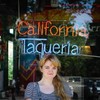Screencap via
Brian Green, character supervisor at Pixar studios, loves his job. And no wonder—for more than 20 years, he’s worked alongside some of the most creative people in the world to design the animated casts of films like Toy Story, Finding Nemo, Monsters, Inc, and Ratatouille.Green heads up the character department at Pixar. It’s the heart of the company in many ways: Pixar films are predicated on the personalities of their loveable animated cast members. And more often than not, plot is secondary to the relationships portrayed onscreen.“When you leave movie theatres, there are two things you remember: story and characters,” Green tells The Creators Project. “Everything else is less exciting, in my mind. You always remember the characters, what they felt and what they went through. Our movies are all about community and relationships, and those types of values. So these characters reflect all of that.”The day-to-day activity within the department is incredibly varied and colourful. While working on a Pixar movie is a long and intense process driven by studio deadlines, it still involves plenty of play and experimentation. “Around the time of Finding Nemo, we created this department where we do everything—model, rig, shade, do everything for character building,” Green says.“It's this fun thing—practically speaking in a day, you're looking at all this different art and all these different creations, there are all these scribbly drawings and paintings, and then you get to turn them into an actual character in a movie. So you go through this very collaborative, cool process with all these amazing artists. You're figuring all this out and at the end of it, you have this amazing cast. And the cast is the characters in the movie.”There’s a question that Green has been trying to answer for decades. How do you make a character inherently appeal to an audience? He thinks he’s cracked it to some extent—the answer lies somewhere in the fact that even when Pixar characters are monsters or rats or fish, they feel incredibly human. Also, they’re really funny. “You're studying people,” he says. “How do you create emotion, how do you relate to it? And that's exciting, because it means we're not just talking about cartoons. We're talking about each other. Humans and faces and how we relate. Are you happy, sad, quizzical? How do you convey all that? What makes someone quizzical?”A formative moment in Green’s career was working on the character of Sully from Monsters, Inc. He spent an entire year designing the iconic blue not-so-scary monster. He explains how, although he grew up watching and loving cartoons, the Pixar animated features he's worked on are made with the opposite intent.“Even though they're very stylised, the characters have weight to them, and they fit into their environment—they're not cartoons. You're trying to create a believability around them, so you don't go into that crazy cartoon world where anything can happen and it's funny and crazy. I mean that's a fun place to explore, but it's not where we're exploring,” he says.“We work on these movies for a long time, we're working with these characters who we want to love, who we like, and who have depth,” he says. "It's a good journey, because you think of cartoons and their characters as things that can be squashed and stretched and damaged and whatever, but our characters are trying to make you care what's happening to them, they have a vulnerability and that's important to us.”All Pixar characters have an inherent vulnerability, and like humans they are easily hurt. “With Sullivan and Boo, if you remember the scene where Boo gets hurt, you realise—oh, they can be hurt. You build it up, you care about their relationship, and then you care if they get hurt. So those are the relationships we set up throughout all our movies,” Green explains.After twenty years of tinkering with animated characters, Green and his colleagues have a pretty good idea of how to create realistic human emotion on a non-human face. “We try to create rules to express all this stuff. We create guidelines—so this is what the character can and can't do. We also use a very careful casting method, because there are people who can do soft emotions and who are really good at that and might be appropriate for a character that is delicate on screen, but then there are people who are really good at physical acting.”As any fan of Pixar knows, every new release features more detailed and realistic character movements—tiny facial tics, flowing hair blowing in the wind, eyebrows that subtly move up and down with speech. But for Green, there is an important distinction between physical and emotional realism. “There's some talk in the industry about motion capture and realism, and all that type of stuff,” Green says. He’s uninterested in all that—it’s irrelevant to what he and his department do.“We don't want photorealism. We want to stylise and exaggerate, and really do what artists do—which is look at something, and try and figure out what makes it appealing, bring it out, and then hide the fact we have that knowledge.”Brian Green is speaking at Pause Fest 2017, which runs from the 8-10 February. Buy tickets and view the full speaker lineup here, and enter to win tickets here.Related:Pixar's Secret to Nailing ItPeek Inside Pixar’s New All-Access ExhibitionPixar Tribute Spans 20 Years of Emotional Ass-Kicking
Advertisement
Advertisement
Advertisement
Advertisement
